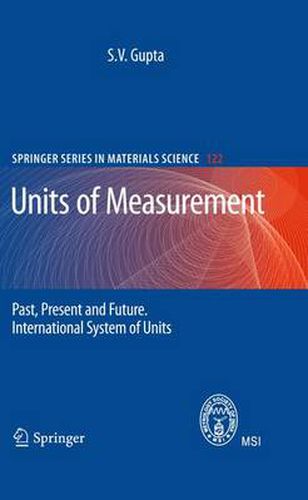Readings Newsletter
Become a Readings Member to make your shopping experience even easier.
Sign in or sign up for free!
You’re not far away from qualifying for FREE standard shipping within Australia
You’ve qualified for FREE standard shipping within Australia
The cart is loading…






This title is printed to order. This book may have been self-published. If so, we cannot guarantee the quality of the content. In the main most books will have gone through the editing process however some may not. We therefore suggest that you be aware of this before ordering this book. If in doubt check either the author or publisher’s details as we are unable to accept any returns unless they are faulty. Please contact us if you have any questions.
It is for the first time that the subject of quantities and their respective units is dealt this much in detail, a glimpse of units of measurements of base quantities of length, time, mass and volume is given for ancient India, three and four dimensional systems of measurement units are critically examined, establishment of the fact that only four base units are needed to describe a system of units, the basics to arrive at the unit of a derived quantity are explained, basic, derived and dimensionless quantities including quantity calculus are introduced, life history of scientists concerned with measurements units are presented to be inspiring to working metrologists and students. The International System of Units including, Metre Convention Treaty and its various organs including International National of Weights and Measure are described. The realisation of base units is given in detail. Classes of derived units within the SI, units permitted for time to come, units outside SI but used in special fields of measurements are described. Methods to express large numbers are explained in detail. Multiples and sub-multiples prefixes and their proper use are also given. The latest trends to redefine the base Kilogram, Ampere, Kelvin and Mole on existing base units of mass, electric current, temperature and amount of substance, in terms of a single parameter or fundamental constants are briefly described.
$9.00 standard shipping within Australia
FREE standard shipping within Australia for orders over $100.00
Express & International shipping calculated at checkout
This title is printed to order. This book may have been self-published. If so, we cannot guarantee the quality of the content. In the main most books will have gone through the editing process however some may not. We therefore suggest that you be aware of this before ordering this book. If in doubt check either the author or publisher’s details as we are unable to accept any returns unless they are faulty. Please contact us if you have any questions.
It is for the first time that the subject of quantities and their respective units is dealt this much in detail, a glimpse of units of measurements of base quantities of length, time, mass and volume is given for ancient India, three and four dimensional systems of measurement units are critically examined, establishment of the fact that only four base units are needed to describe a system of units, the basics to arrive at the unit of a derived quantity are explained, basic, derived and dimensionless quantities including quantity calculus are introduced, life history of scientists concerned with measurements units are presented to be inspiring to working metrologists and students. The International System of Units including, Metre Convention Treaty and its various organs including International National of Weights and Measure are described. The realisation of base units is given in detail. Classes of derived units within the SI, units permitted for time to come, units outside SI but used in special fields of measurements are described. Methods to express large numbers are explained in detail. Multiples and sub-multiples prefixes and their proper use are also given. The latest trends to redefine the base Kilogram, Ampere, Kelvin and Mole on existing base units of mass, electric current, temperature and amount of substance, in terms of a single parameter or fundamental constants are briefly described.